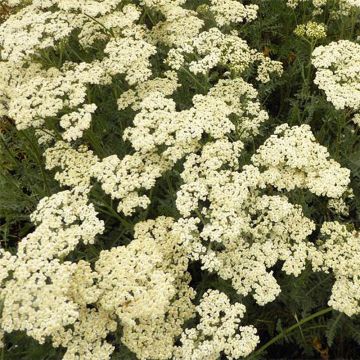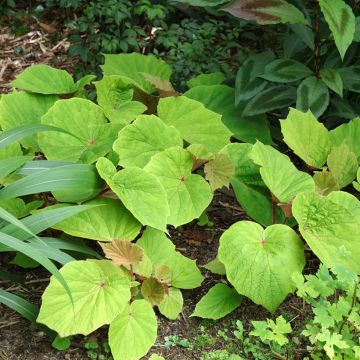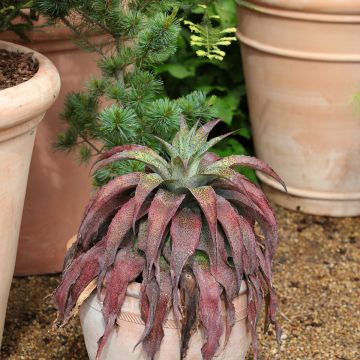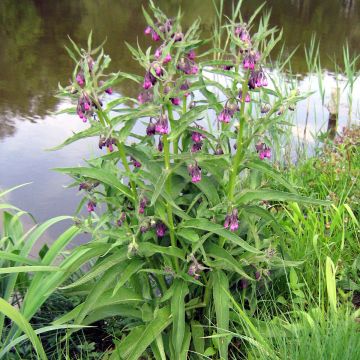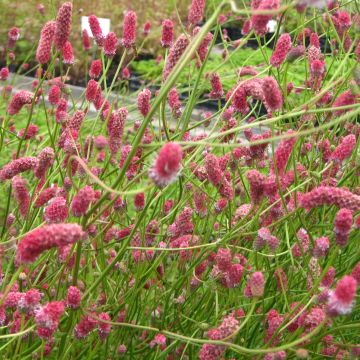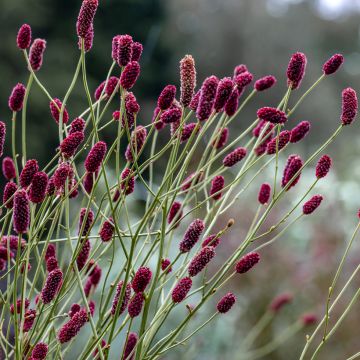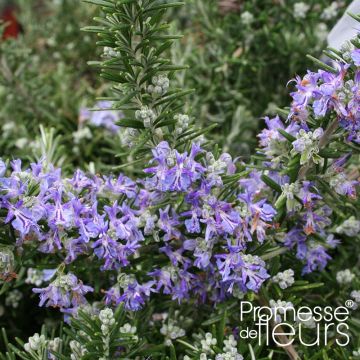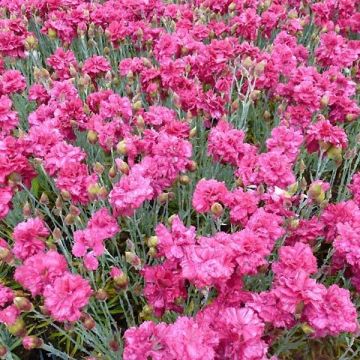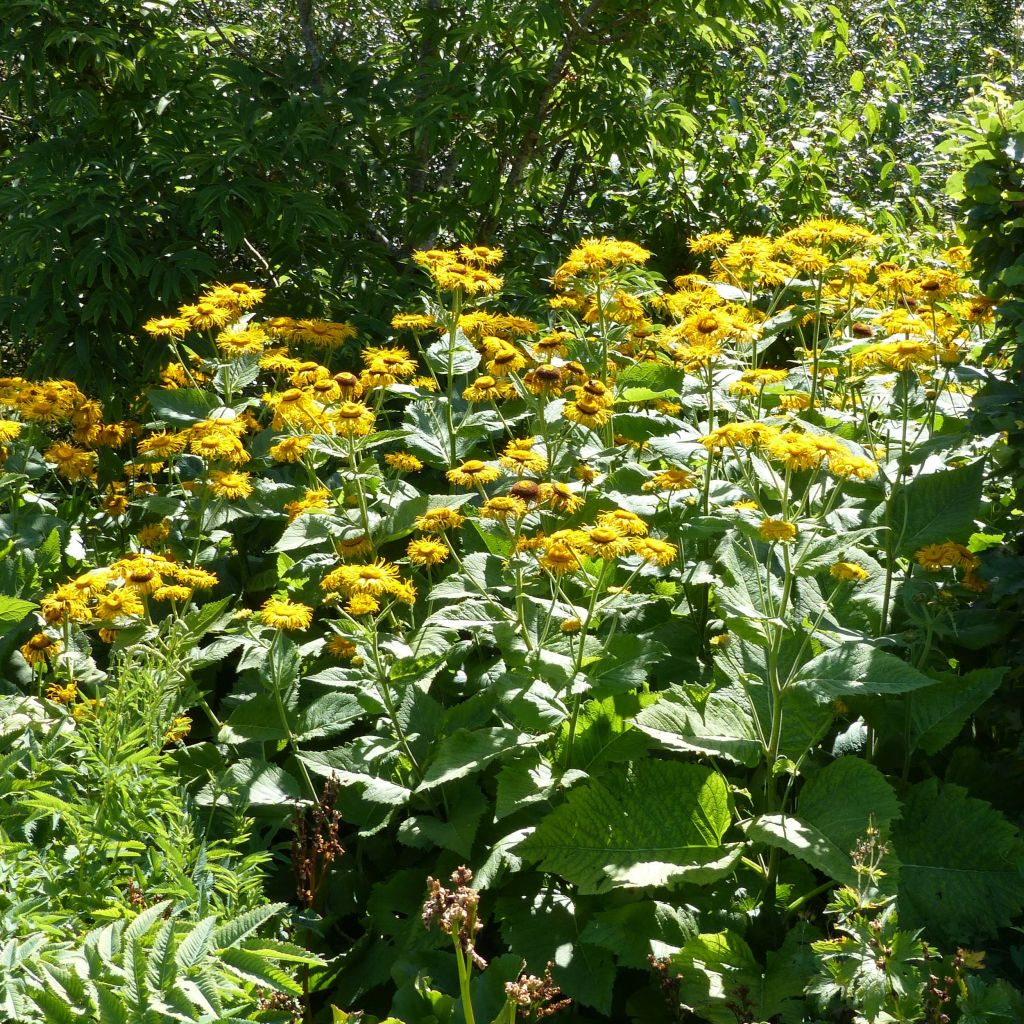

Telekia speciosa
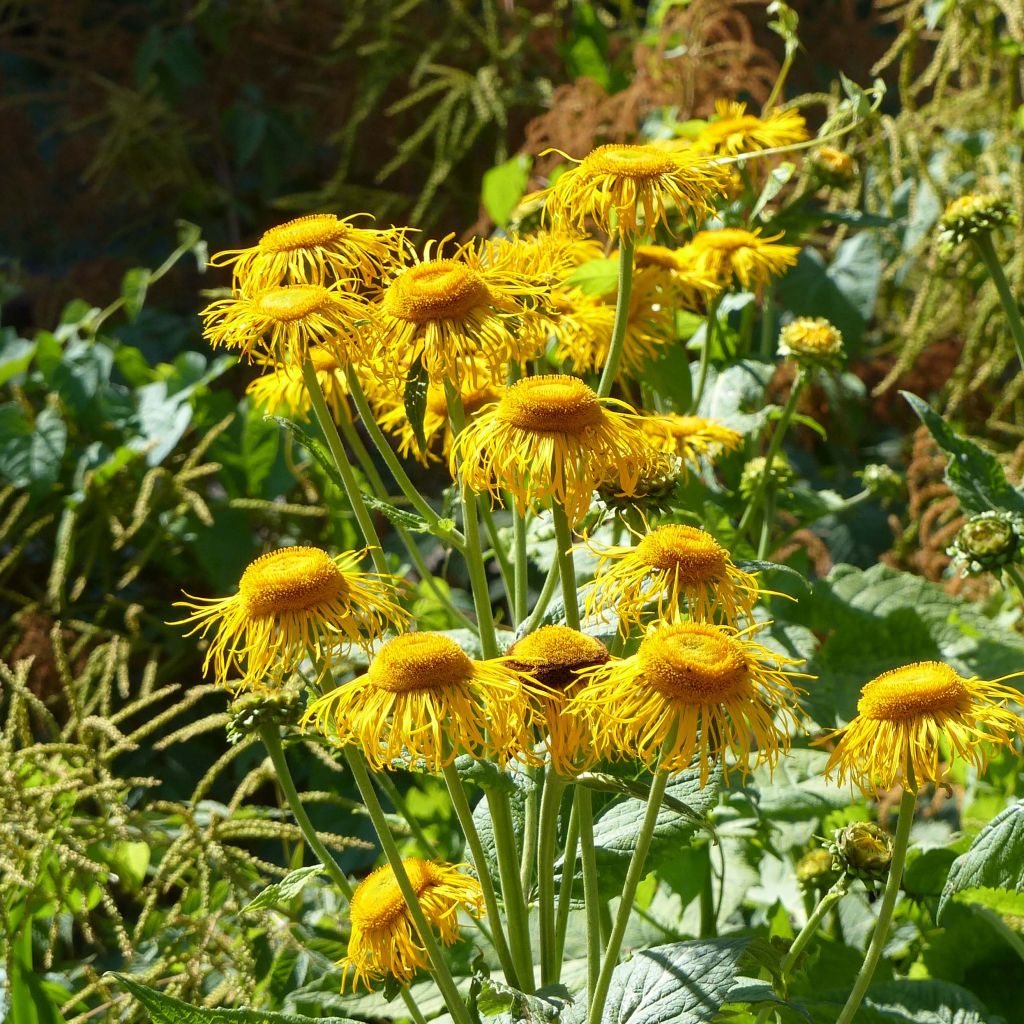

Telekia speciosa


Telekia speciosa
Telekia speciosa
Telekia speciosa
Yellow Oxeye, Heartleaf Oxeye
The bucket received this winter seems to be very well rooted. However, I am surprised that I still don't see any sign of vegetation growth.
Ewen, 02/05/2023
Special offer!
Receive a €20 voucher for any order over €90 (excluding delivery costs, credit notes, and plastic-free options)!
1- Add your favorite plants to your cart.
2- Once you have reached €90, confirm your order (you can even choose the delivery date!).
3- As soon as your order is shipped, you will receive an email containing your voucher code, valid for 3 months (90 days).
Your voucher is unique and can only be used once, for any order with a minimum value of €20, excluding delivery costs.
Can be combined with other current offers, non-divisible and non-refundable.
Home or relay delivery (depending on size and destination)
Schedule delivery date,
and select date in basket
This plant carries a 12 months recovery warranty
More information
We guarantee the quality of our plants for a full growing cycle, and will replace at our expense any plant that fails to recover under normal climatic and planting conditions.

Would this plant suit my garden?
Set up your Plantfit profile →
Description
Telekia speciosa, sometimes called yellow Ox-eye or Splendid Telekia, is a large bushy perennial with rhizomes that produce impressive tall leafy stems, 2 metres (7 feet) high. It forms a beautiful mass of large dark green and aromatic leaves and flowers from summer to autumn with single daisy-like, golden yellow flowers with an orange centre. This resourceful plant nourishes birds and pollinators, bringing joy to borders and wildflower compositions at the end of the season. It thrives in ordinary but fertile, even clay or limestone, moist soil in full sun or light shade.
Telekia speciosa, also known as Buphtalmum speciosum, Telekia cordifolium, Telekia ovata, Inula caucasica, or Corvisartia caucasica, is a botanical species of the Asteraceae family, related to perennial sunflowers (Helianthus). Discovered in Transylvania, this rhizomatous plant with deep roots is native to mountainous regions in western and southwestern Europe, Georgia, Ukraine, southern and central Russia (from the Balkans to the Caucasus), and Turkey (humid clearings of Anatolia). This plant forms a large, erect branching clump which easily reaches 2 metres (7 feet) high with a 1-metre (3 feet) spread. It flowers from June-July to September-October and is loved by bees. Lots of flowers appear at the branched top of the stems, resembling perfectly round, 6 to 10 cm (2 to 4in) diameter, bright yellow daisies with an orange centre that turns brown and is marked by a circle, hence the name "ox-eye." The dark green, thick, aromatic, cordate at the base, triangular, doubly toothed deciduous leaves can reach up to 30 cm (12in) long, all the way up the stems. They are smooth on the upper surface and hairy on the underside. The small basal leaves do not exceed 10 cm (4in) long. Telekia speciosa easily naturalises through self-seeding.
This large perennial 'sunflower' has a long fragrant, nectar-rich flowering period and is adapted to cold and damp soils, even limestone. Telekia speciosa is an excellent non-invasive, long-lasting, vigorous perennial. It is perfect for the back of a border or bed, or the water's edge because it does not tolerate a combination of heat and drought well. It has a wild appearance and integrates well into slightly untamed areas of the garden, with cosmos, perennial sweet peas, giant scabious (Cephalaria gigantea), gaillardias, Japanese anemones, and hanging willowherb. Another idea would be to group it with equally easy plants: Vernonia noveboracensis, Symphyotrichum laeve var. 'Bluebird', Eupatorium fistulosum, Symphyotrichum georgianum, Andropogon virginicus, Muhlenbergia capillaris. Its flowers hold up very well when cut.
Report an error about the product description
Telekia speciosa in pictures


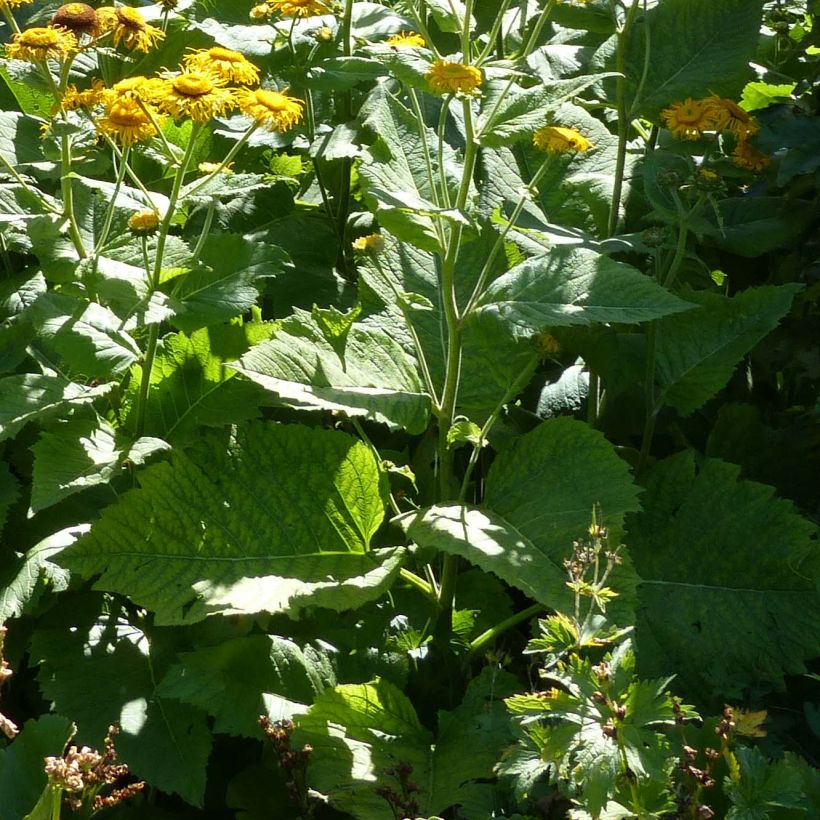

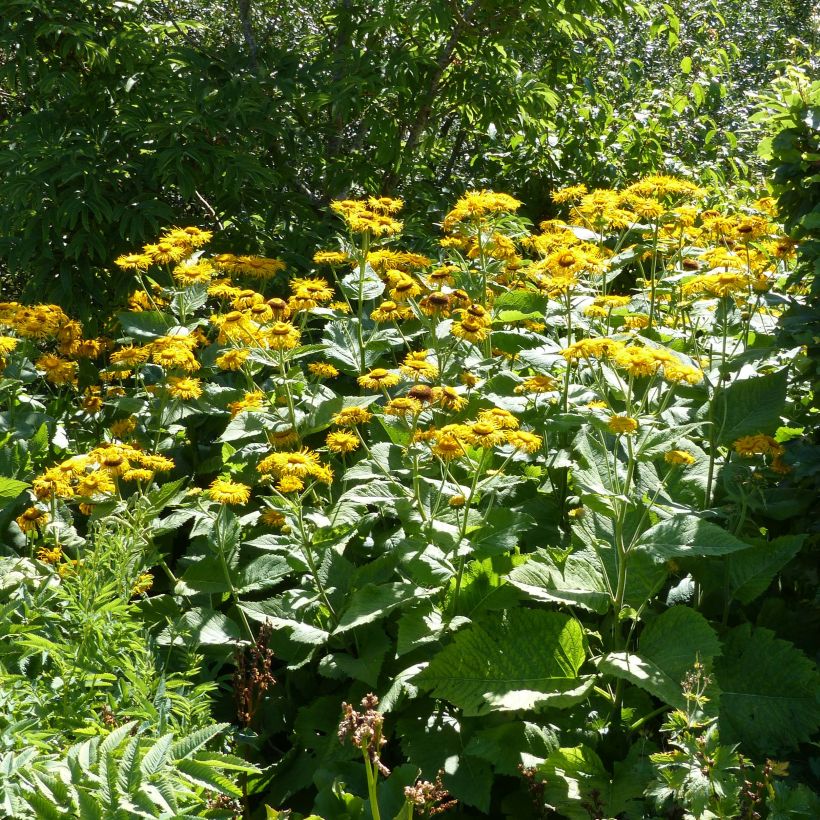

Flowering
Foliage
Plant habit
Botanical data
Telekia
speciosa
Asteraceae
Yellow Oxeye, Heartleaf Oxeye
Caucasus
Other Perennials A to Z
View all →Planting and care
Plant Telekia speciosa in ordinary, fertile, well-drained soil, even clay or limestone. This perennial does not tolerate drought well but can tolerate heavy soils, as long as they are well-cultivated and rich. Plant in a sunny position in moist soil, or in partial shade in drier soil, sheltered from strong winds that could flatten the clump. The plant generally does not need staking. It readily self-seeds in the garden, making it an ideal candidate for transition zones with the countryside. Its seeds will feed the birds. Prune the clump after flowering to prevent self-seeding.
Planting period
Intended location
Care
-
, onOrder confirmed
Reply from on Promesse de fleurs
Similar products
Haven't found what you were looking for?
Hardiness is the lowest winter temperature a plant can endure without suffering serious damage or even dying. However, hardiness is affected by location (a sheltered area, such as a patio), protection (winter cover) and soil type (hardiness is improved by well-drained soil).

Photo Sharing Terms & Conditions
In order to encourage gardeners to interact and share their experiences, Promesse de fleurs offers various media enabling content to be uploaded onto its Site - in particular via the ‘Photo sharing’ module.
The User agrees to refrain from:
- Posting any content that is illegal, prejudicial, insulting, racist, inciteful to hatred, revisionist, contrary to public decency, that infringes on privacy or on the privacy rights of third parties, in particular the publicity rights of persons and goods, intellectual property rights, or the right to privacy.
- Submitting content on behalf of a third party;
- Impersonate the identity of a third party and/or publish any personal information about a third party;
In general, the User undertakes to refrain from any unethical behaviour.
All Content (in particular text, comments, files, images, photos, videos, creative works, etc.), which may be subject to property or intellectual property rights, image or other private rights, shall remain the property of the User, subject to the limited rights granted by the terms of the licence granted by Promesse de fleurs as stated below. Users are at liberty to publish or not to publish such Content on the Site, notably via the ‘Photo Sharing’ facility, and accept that this Content shall be made public and freely accessible, notably on the Internet.
Users further acknowledge, undertake to have ,and guarantee that they hold all necessary rights and permissions to publish such material on the Site, in particular with regard to the legislation in force pertaining to any privacy, property, intellectual property, image, or contractual rights, or rights of any other nature. By publishing such Content on the Site, Users acknowledge accepting full liability as publishers of the Content within the meaning of the law, and grant Promesse de fleurs, free of charge, an inclusive, worldwide licence for the said Content for the entire duration of its publication, including all reproduction, representation, up/downloading, displaying, performing, transmission, and storage rights.
Users also grant permission for their name to be linked to the Content and accept that this link may not always be made available.
By engaging in posting material, Users consent to their Content becoming automatically accessible on the Internet, in particular on other sites and/or blogs and/or web pages of the Promesse de fleurs site, including in particular social pages and the Promesse de fleurs catalogue.
Users may secure the removal of entrusted content free of charge by issuing a simple request via our contact form.
The flowering period indicated on our website applies to countries and regions located in USDA zone 8 (France, the United Kingdom, Ireland, the Netherlands, etc.)
It will vary according to where you live:
- In zones 9 to 10 (Italy, Spain, Greece, etc.), flowering will occur about 2 to 4 weeks earlier.
- In zones 6 to 7 (Germany, Poland, Slovenia, and lower mountainous regions), flowering will be delayed by 2 to 3 weeks.
- In zone 5 (Central Europe, Scandinavia), blooming will be delayed by 3 to 5 weeks.
In temperate climates, pruning of spring-flowering shrubs (forsythia, spireas, etc.) should be done just after flowering.
Pruning of summer-flowering shrubs (Indian Lilac, Perovskia, etc.) can be done in winter or spring.
In cold regions as well as with frost-sensitive plants, avoid pruning too early when severe frosts may still occur.
The planting period indicated on our website applies to countries and regions located in USDA zone 8 (France, United Kingdom, Ireland, Netherlands).
It will vary according to where you live:
- In Mediterranean zones (Marseille, Madrid, Milan, etc.), autumn and winter are the best planting periods.
- In continental zones (Strasbourg, Munich, Vienna, etc.), delay planting by 2 to 3 weeks in spring and bring it forward by 2 to 4 weeks in autumn.
- In mountainous regions (the Alps, Pyrenees, Carpathians, etc.), it is best to plant in late spring (May-June) or late summer (August-September).
The harvesting period indicated on our website applies to countries and regions in USDA zone 8 (France, England, Ireland, the Netherlands).
In colder areas (Scandinavia, Poland, Austria...) fruit and vegetable harvests are likely to be delayed by 3-4 weeks.
In warmer areas (Italy, Spain, Greece, etc.), harvesting will probably take place earlier, depending on weather conditions.
The sowing periods indicated on our website apply to countries and regions within USDA Zone 8 (France, UK, Ireland, Netherlands).
In colder areas (Scandinavia, Poland, Austria...), delay any outdoor sowing by 3-4 weeks, or sow under glass.
In warmer climes (Italy, Spain, Greece, etc.), bring outdoor sowing forward by a few weeks.































